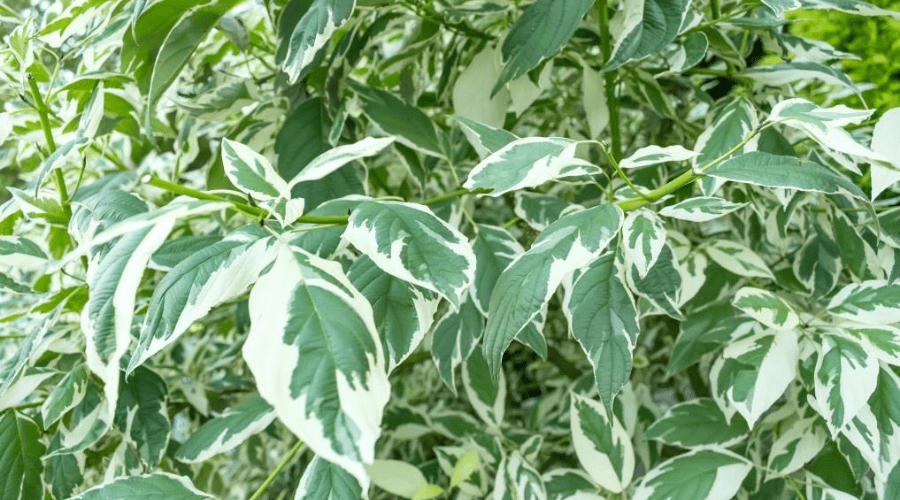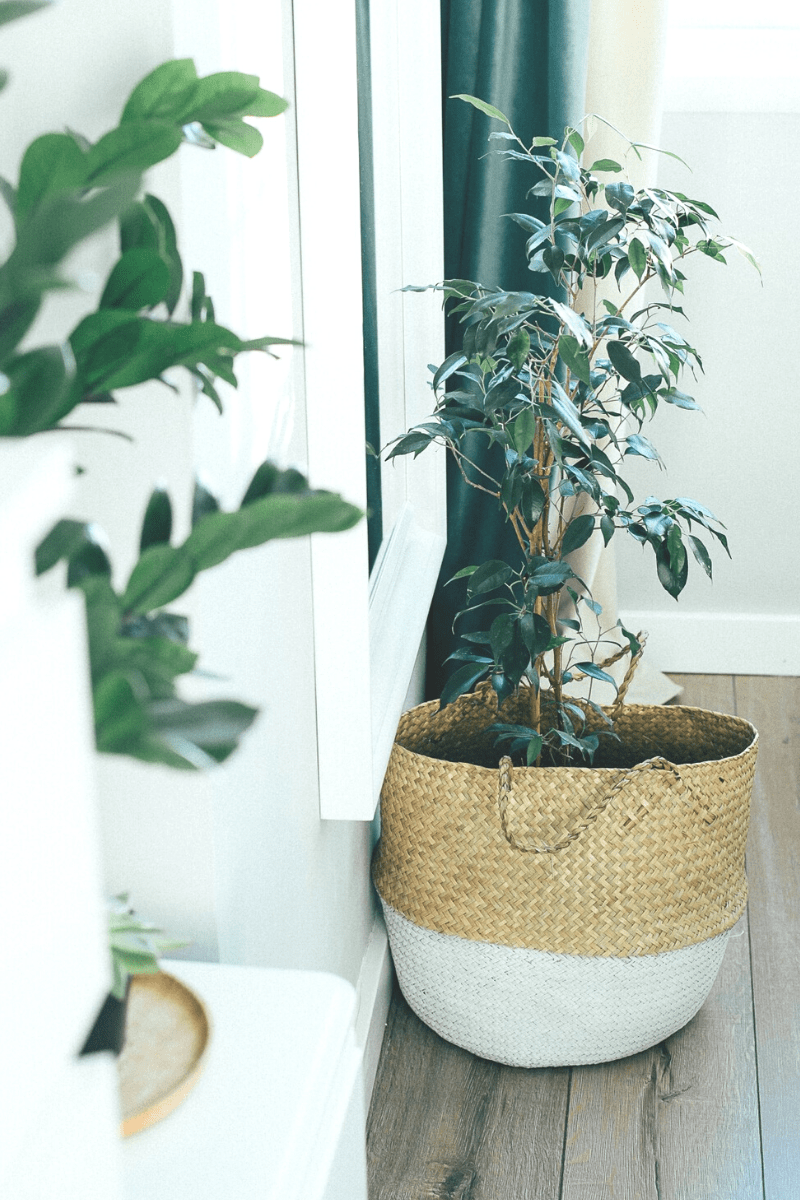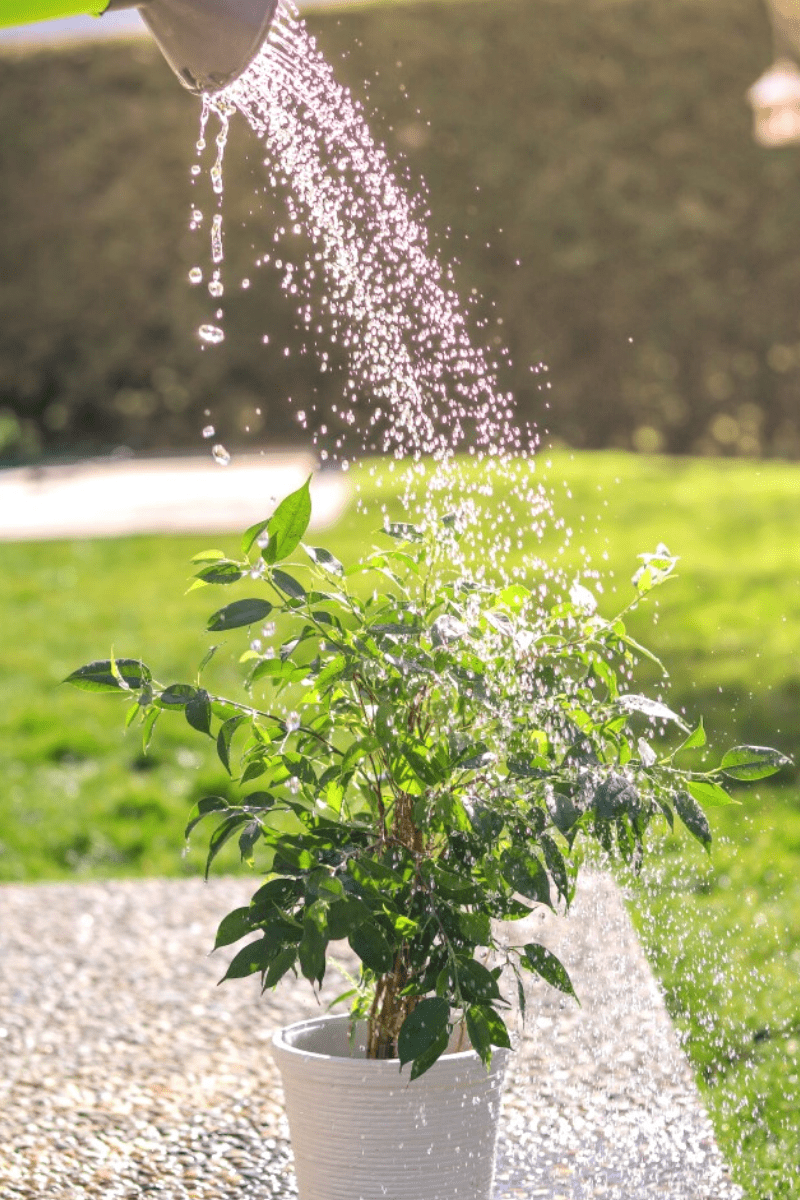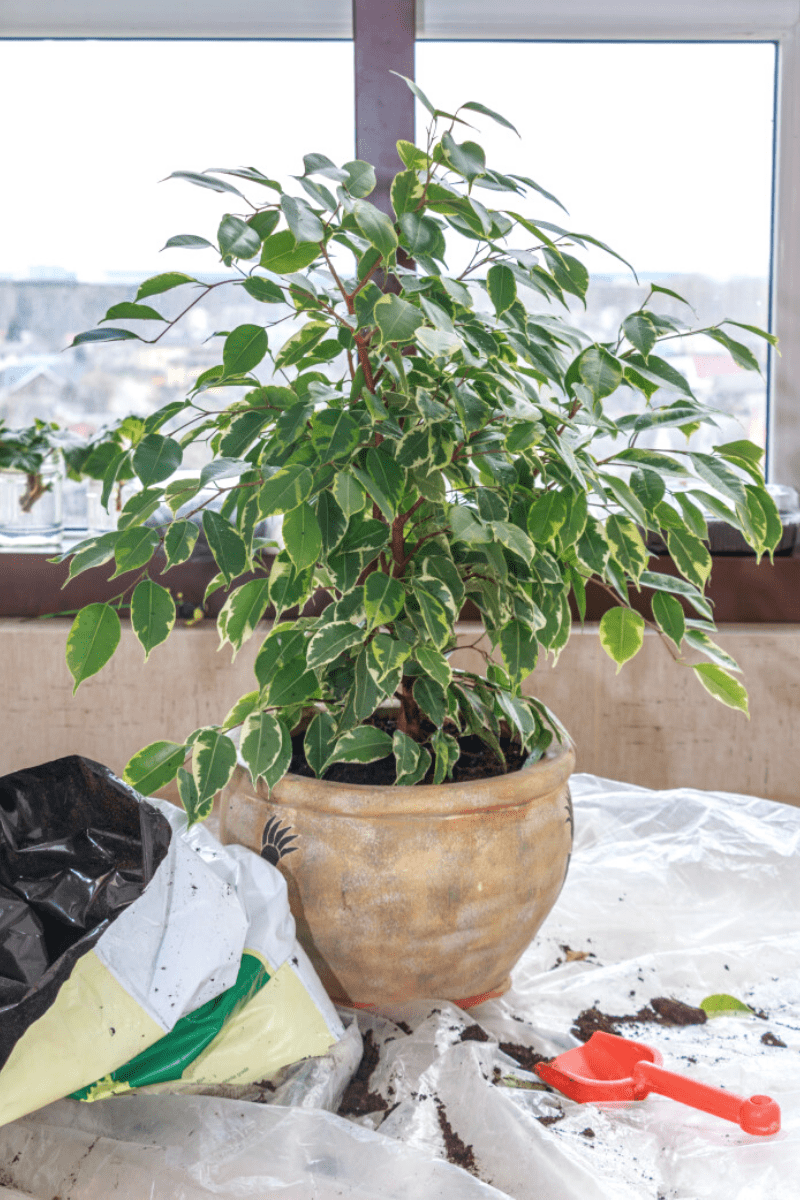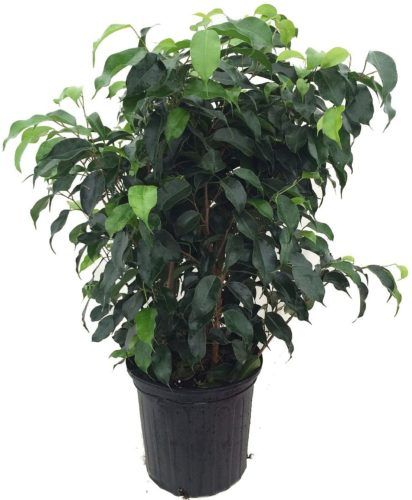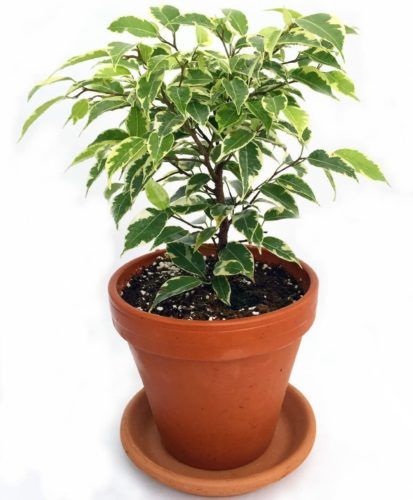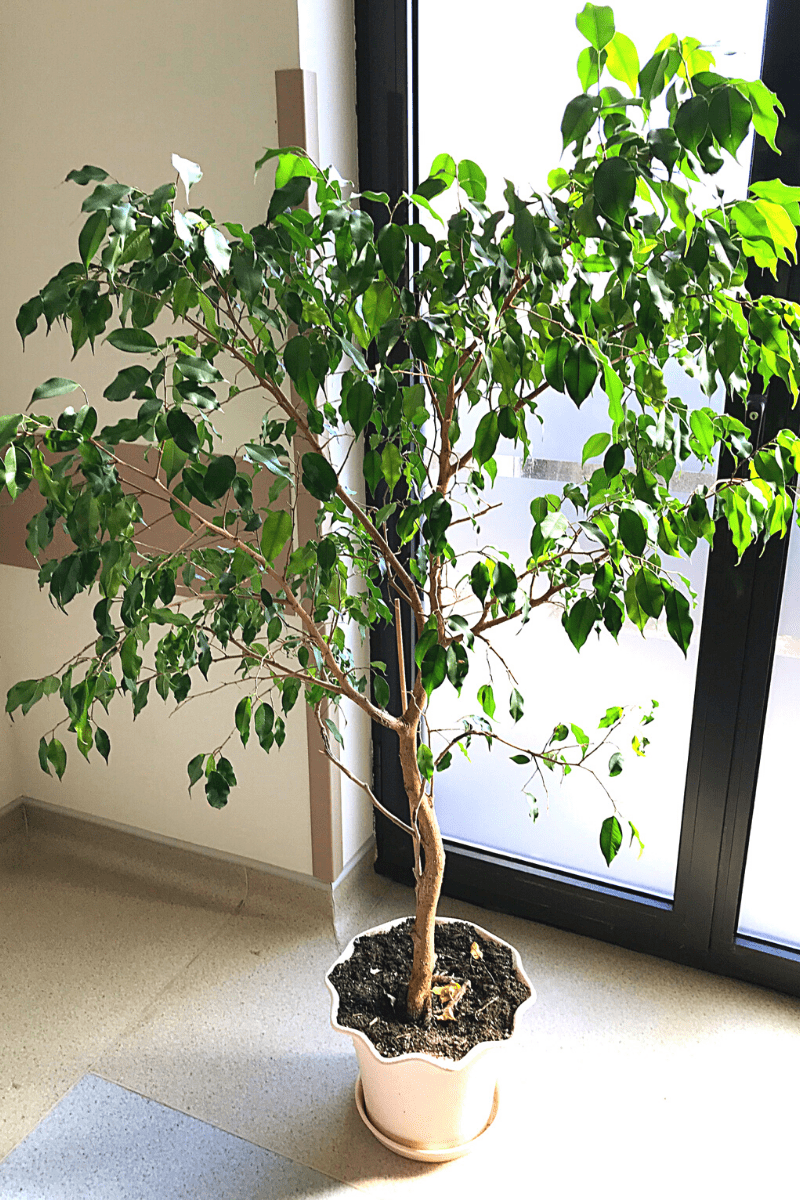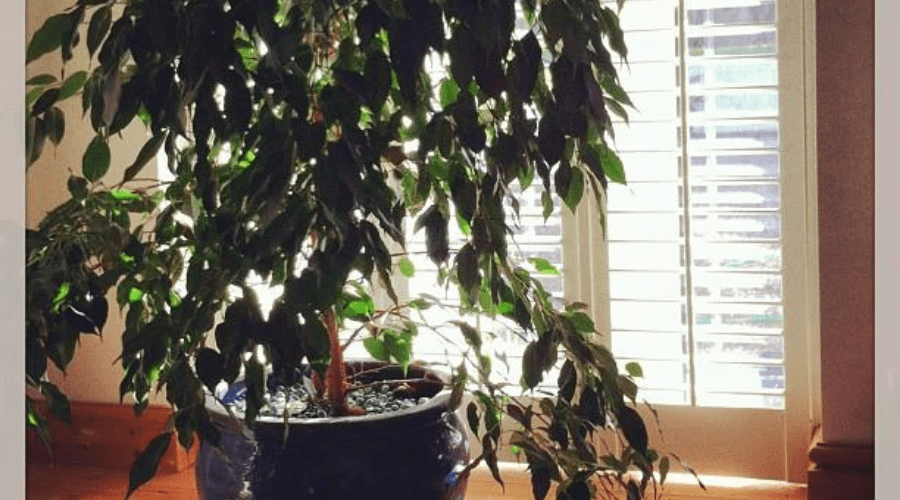The weeping fig is a tree that has large, arching branches and leaves with pointed tips. Over the past few years, it has become a popular indoor plant that is now available from most large plant suppliers as well as local nurseries. If you'd like your own Ficus benjamina, you're in luck. You can find everything you need to know to grow a healthy, thriving weeping fig, including water, light and soil needs, as well as propagation and disease and pest control.
Weeping Fig Details
Ficus benjamina
Ease of Care: Easy
Light: Bright light, partial shade
Water: Moderate
Temperature: Prefers 65 to 75 degrees
Height: Up to 10 feet
Growth Rate: Moderate
Pest: Spider mites and scales
Disease: Phomopsis canker, dieback
Toxicity: Poisonous to cats and dogs
Benefits of a Weeping Fig
There are several reasons you might want to learn how to grow a weeping fig. Which of the following reasons make you want your own tree?
Appearance
The weeping fig has a striking appearance. Its large branches are impossible to ignore. If you have a typical variety of weeping fig, the leaves will be shiny and green. However, you can also find other varieties with different colors and patterns. With a flexible trunk that sometimes resembles a banyan tree, this fig is a stylish addition to your home.
Low Maintenance
If you're looking for a plant that doesn't require a green thumb, the weeping fig is an excellent option. It's not too fickle and won't die if you make a mistake or two.
This plant can handle a range of temperatures, lets you know when it needs more or less water, and has flexible lighting needs. As far as indoor trees go, this is one of the easiest to grow.
Improve Air Quality
Almost all plants improve indoor air quality to a certain degree. However, the Ficus benjamina is one of the best for clean air. According to one NASA study, this plant cleans the air of xylene, toluene, and formaldehyde. When you have a weeping fig in your home, you can breathe easier.
Caring for a Weeping Fig
With the right care, your weeping fig will thrive. Fortunately, it doesn't take too much to accomplish the level of care your plant needs. As long as you meet the requirements for temperature, watering, and light, you'll have a happy fig.
Light
Like all plants, your weeping fig needs light to survive. It likes bright light, but needs to be in partial shade. If you can find a spot in your home that receives sun for one part of the day and shade for another part, then It's ideal for your weeping fig.
Whatever you do, avoid moving your fig tree more than necessary. Make sure the first spot you place your tree has ideal lighting. If you move the tree or even turn it around, the weeping fig will lose leaves. It needs to remain stationary.
Water
If you over or underwater this plant, it will lose its leaves. Before that happens, check the leaves. Do they feel crispy and brittle? If so, the plant needs more water. A plant that have leaves that fold over easily is getting too much water.
You should water your plant every time the soil at the top dries out. Water it enough to let water come out from the drainage holes in the bottom of the pot. In the winter, water your plant less frequently.
In the summer, your plant is more likely to dry out. To avoid this from happening, mist it frequently.
Temperature & Humidity
The weeping fig likes to be inside a home that has a temperature range of 65 to 75 degrees. That said, it can survive temperatures under 50 degrees.
If you have your plant in an outdoor living space, be sure to bring it inside in the winter. Even though your plant may survive a cold snap, it will struggle. Your best bet is to keep it inside and make sure your thermostat is set to 50 degrees or higher.
Fertilizer
Unlike some other indoor plants, the weeping fig does not need much fertilizer. Between April and September, fertilize your plant once a month. Between October and March, don't use any fertilizer.
Repotting
Because this plant does not like to be moved, it shouldn't be reported unless necessary. You can usually go several years without repotting your tree. When you do repot it, do so with extreme care. Use a fast draining potting mix for the best results.
Propagation
Once you have a happy weeping fig, you can propagate it with ease. Typically, propagation is best during the summer months.
Using a sharp knife or shears, cut a few inches of branches from your tree. Dip the branch in rooting hormone and place your cutting in the soil. Although the hormone isn't necessary, it does make propagation much easier.
Pruning
As leaves on your tree get older, they should be removed. You can prune this tree to fit well in your living space. Generally, pruning is best done as fall approaches and as spring approaches. Use sharp pruning shears to get a clean cut on every branch.
Varieties of Weeping Fig Tree
There are several types of weeping fig trees, but the solid green variety is the most common. Although the plant doesn't flower, the unique shape of the leaves and the bold green color is enough to add style to your room.
Hirts Gardens Wintergreen Weeping Fig Tree
The Wintergreen Weeping Fig is a new introduction from Europe. The tree thrives in low light, which is unusual for a Weeping Fig. Keep evenly moist, not wet or dry and trim as needed. This one ships in an 8-inch grower's pot.
You can also find weeping figs with variegated leaves. The starlight variety is a prime example of this. However, trees with lighter leaves are less tolerant to the low light conditions that often come with indoor growth.
JMBamboo Gardens Starlight Weeping Fig
The Starlight Weeping Fig is a newer cousin of the popular Weeping Fig. It thrives with very bright, indirect light or morning sun. Keep evenly moist, not wet or dry. Trim as needed. This plant ships in a 4-inch grower's pot.
If you want a small tree, you should consider getting a weeping fig bonsai. With this variety of fig, you don't need to worry about it growing too large. Depending on the pot, the tree may only grow to be three feet or less.
The trunk of a weeping fig also varies. Some cultivators breed these trees to have column spires and other unique qualities. If you want a variety that's less likely to shed its leaves, you should opt for the Monique.
Where to Buy
You can buy weeping fig trees online or at plant nurseries. However, some of the varieties are harder to find than others, and all varieties will drop a substantial number of leaves following shipping, so it is recommended that you purchase this plant locally when possible.
If your local home goods stores or nurseries don't have weeping figs, you can try eBay searching for ficus benjamina in your location for pickup options, which will stress your plant less and result in fewer dropped leaves.
If local purchase isn't an option, Garden Goods Direct offers a number of Ficus benjamina varieties in various sizes.
FAQ
Want to know more about this indoor plant? Find out all the answers to your questions.
Why Is My Weeping Fig Shedding?
One of the only disadvantages to owning a weeping fig is its propensity to shed. In the fall, most weeping figs start to lose some leaves. As this occurs, mist your plant occasionally. Resist the urge to water it too much, or you'll lose even more leaves.
Sometimes, the leaves of this tree fall off because the plant has too much or too little water. You need to do some troubleshooting and look at your plant. Are the leaves brittle, or do they bend easily? Brittle leaves are a sign that you need to give the plant water, while leaves that bend are a sign that you need to water the plant less frequently.
You can also check the soil. If the soil feels very dry, your plant needs more water. Meanwhile, soil that's wet to the touch indicates that the plant has too much water. Adjust your schedule accordingly.
Why are My Plant's Leaves Pale?
If the leaves on your plant seem pale and springy, the tree needs more light. A tree with enough light will have dark and vibrant leaves. You might need to move your plant to give it enough light.
Unfortunately, you need to do this with care. Weeping figs do not like to be moved, so try to disrupt the plant as little as possible. Before you move your tree inside, you should evaluate your lighting and choose a spot for its permanent home.
When Do I Need to Prune My Tree?
If a weeping fig is outside, it needs to receive pruning on a regular basis. But once inside, a tree needs less pruning. You only need to prune it when you find dead leaves and branches.
Twice a year, you can prune your tree to achieve your desired shape. Only do this at the end of summer and the end of winter. If you have a bonsai, the rules of pruning are very different. You need special tools and should adhere to bonsai principles.
Why Does My Fig Have Yellow Spots?
When a weeping fig has yellow or brown spots, it has a fungus problem. You can treat it by rinsing the leaves with Neem oil. Additionally, keep the tree away from other plants. If another plant is too close, the fungus can spread.

